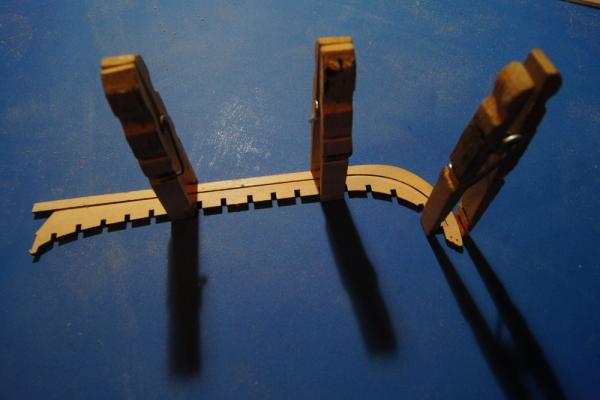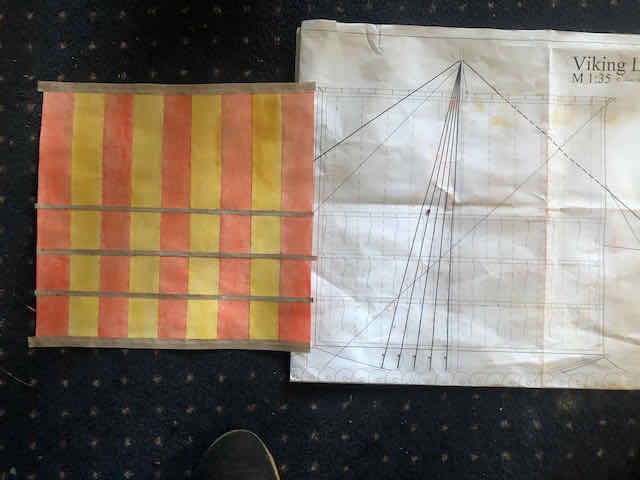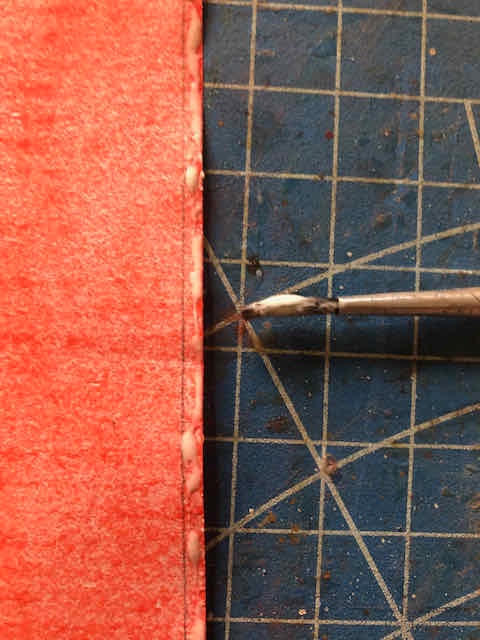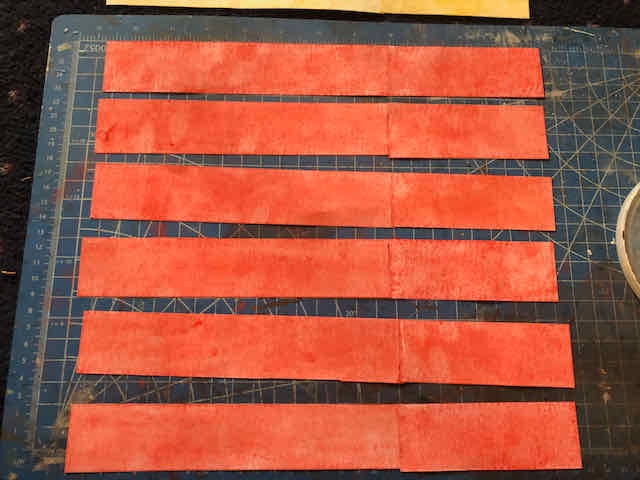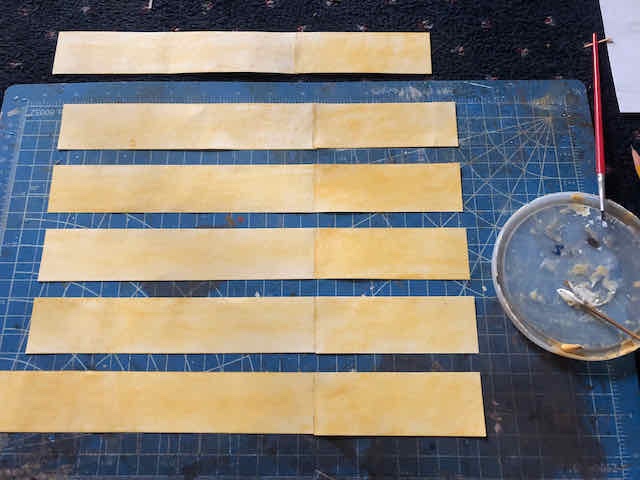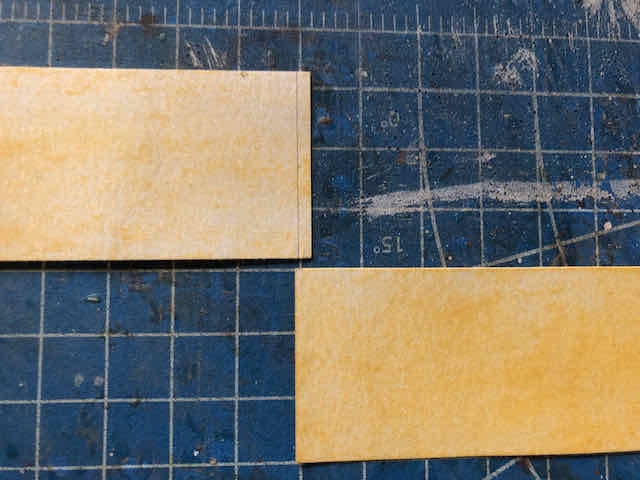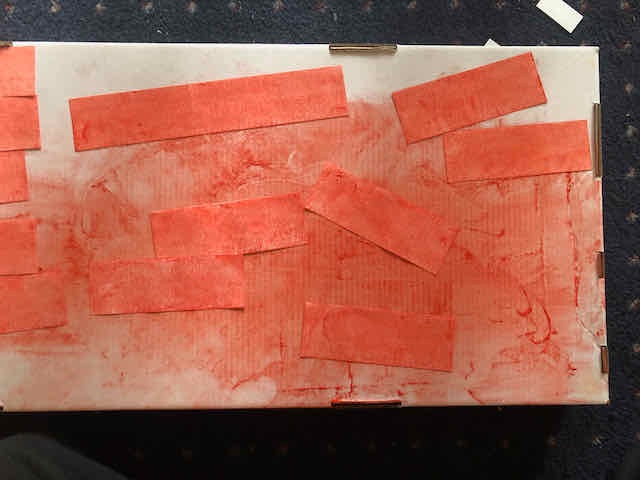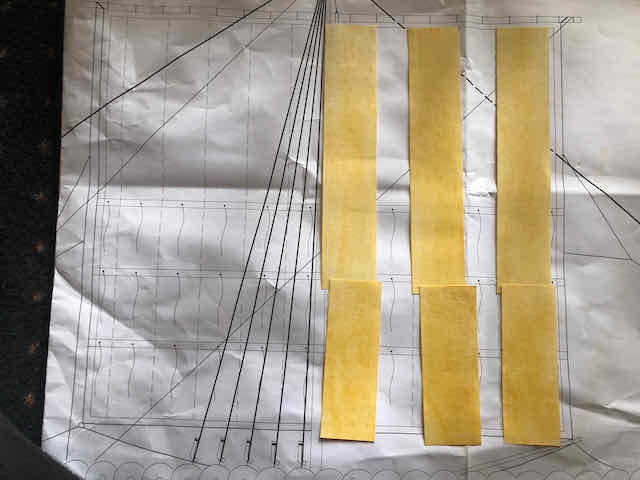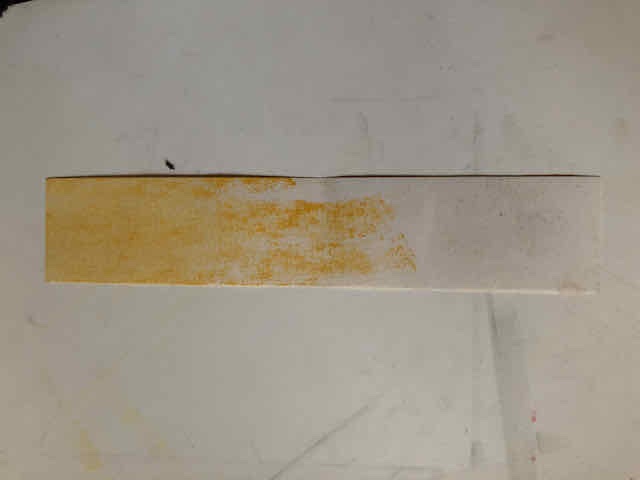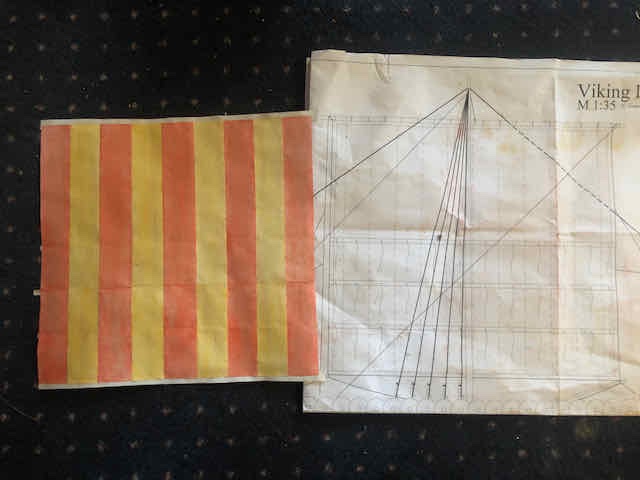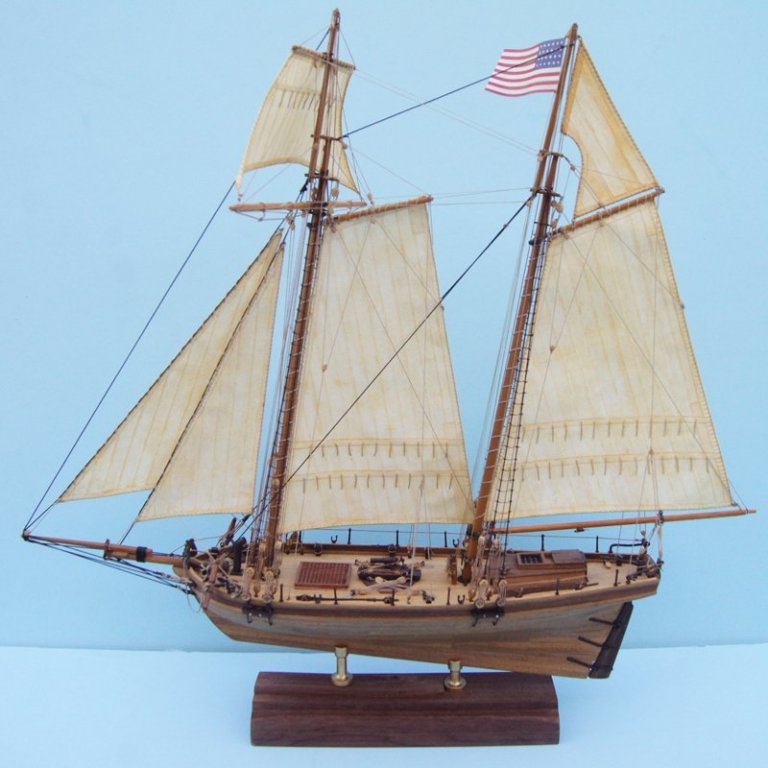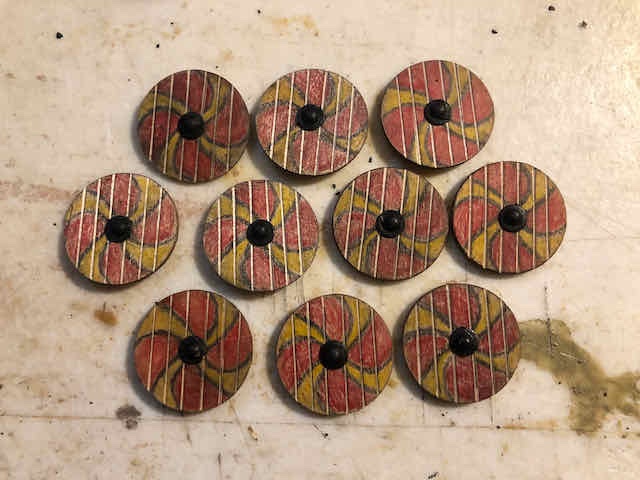-
Posts
3,479 -
Joined
-
Last visited
Content Type
Profiles
Forums
Gallery
Events
Everything posted by Cathead
-
I struggled with the same question, and also liked the idea of shrouds connected to knees rather than through the gunwale. I, too, came to the realization too late to adapt my model's existing structure to it. I just went ahead and tied off to the gunwale, but I like your idea of the added knees. Looks good and captures the essence of the idea. No one but the most pedantic observer will ask "hey, why are there more frames in that section?"
-
Have you looked at BlueJacket's Pirate Brig? It's not a larger ship than the Beagle, but would fit your interest in that realm. Realistically, pirate ships were generally just any ship of the period taken over and converted to that purpose. There wasn't a Royal Pirate Shipyard churning out bespoke designs. So you could also simply decide on an era, then adapt a kit for a likely candidate, for example by adding more guns or something. Could be a fun toe in the water of the kitbashing to scratchbuilding arc. If you want a link to literature, you could always tackle something like Model Shipways' Charles Morgan whaling ship and revisit Moby Dick while you're at it.
-
We did indeed open a bottle of homemade mead last night, so good call there. This is the third model I've made paper sails for and I adore this method.
-
Thanks, that helps. Yes, you do need to bevel the entire false keel. At the stern, the lowest plank will be parallel with the actual keel and ideally flush with it (a smooth surface from keel into planking). At the bow, the whole thing needs to be beveled so there's a "notch" into which the butt ends of the planks can fit, behind the keel (called the stem at the bow), helping hold them in place. See if this image from my build helps you see how this bevel looks. See how there's a shadow all the way along the false keel? Without that, the planks wouldn't have much to "grab on to" when you start attaching them. Does that help?
-
Made lots of progress on the sail, on a cold blustery rainy day that feels very appropriate for this Irish-Norse ship. Here's a step-by-step of what I decided to do. I cut paper panels to represent bolts of sailcloth, making these wide enough to allow for overlap (I decided to mimic the "lapped fell seam" in the link Steven shared above): I then colored each strip yellow or red using pastels rubbed in with my fingers. Do each color on its own and don't mix them, or you'll get all orange panels! The sail is taller than an individual sheet of paper, so I cut the bolts to join under one of the reinforced reefing lines so the seam would be hidden. I marked an overlap at the end of each bolt, gently applied wood glue, then pressed the joint together: Completed yellow and red bolts; these needed slight edge trimming where the joined bolts weren't exactly the same width: I then marked the overlap along the edge of each bolt, carefully brushed on glue, and carefully overlaid each alternate-color bolt: The next step was to start overlaying the reef point and edge reinforcements. I decided to make these grayish brown, as either red or yellow would look odd and I didn't want to try to match color along each bolt. This highlights the structure of the sail and my story is that they're a different cloth or maybe walrus hide. Artist's license. So here's where the sail stands this evening: And here's the other side, which doesn't have reinforcements yet: My current thought is still to do the diagonal reinforcements. Anyone have any idea if these were on both sides or just one side? I'd sure rather only do it once, it's going to be delicate and difficult. Hope you all like it, 'cause I don't want to redo this! Constructive feedback is, of course, welcome, as I can still learn from any mistakes for a future build. Thanks for your support.
-
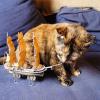
Retired and ready to build my first model!
Cathead replied to lraymo's topic in New member Introductions
Welcomed! Have fun with your first build and don't sweat the details, there's so much to learn just by doing. To start a build log, just go to the main MSW page, scroll down until you see Members' Build Logs >> Build Logs for Ship Model Kits and click on the era your chosen kit fits into (such as 1851-1900). Then, just above where all the build log links start, you'll see big black button labeled "Start New Topic". Click that and it'll prompt you to fill in a title, after which you just start entering your first post. Be sure to read the rules for naming your build log as the site has standardized conventions. Sounds scary but it isn't. One other bit of advice, try to be as detailed as you can in your build log and use photos, especially when you have questions. We can only see what you share with us! -
Bigpetr, thanks for that! I'm aware that shields may have been leather-covered, but explained my reasoning for emphasizing the planking earlier in this log: In a model setting, a plain face might BE more accurate but could LOOK less accurate as it won't necessarily be obvious to a casual viewer that a leather covering is WHY the face is plain. In theory I could have played around with some kind of fabric covering to suggest the right texture, but frankly I just didn't want to, and getting that stretched tight enough without the rims being rumpled could have been very difficult. Maybe in a future project. This falls under modeler's license for me, as will whatever choice I make for the sails. Regardless, I'm grateful for all inputs and opinions because at worst I learn from everyone's knowledge even if I make a different choice.
-
Sorry for the late response. I would have advised painting straight across, which you ended up choosing, so no worries there. As for the missing gunport, my favorite way to do that is to mark out the square and drill small holes just inside the boundary, essentially perforating the wood. This makes it easier to use a small knife or saw to cut out the port. The reason to ensure the holes are just inside, not right along the line, is that you'll end up with an uneven cut no matter how careful you are, so you can use a file or sandpaper to finish it out to the right size. You could also try to simulate a closed gunport lid by using a file to scribe the boundary into the wood, then adding hinges and other details, maybe even a very thin piece over it. You're making good progress and should be proud of your work so far.
-

Talk on Missouri River steamboat design & history, March 9, 2021
Cathead replied to Cathead's topic in Nautical/Naval History
Thanks! -
Hey, don't sell yourself short. I'm only 41 but more jaded than a Chinese emperor's statuary collection.
-

2021 NRG CONFERENCE
Cathead replied to kurtvd19's topic in NAUTICAL RESEARCH GUILD - News & Information
This is the right decision. Vaccinations or not, worse variants are still developing and spreading, and it's simply too hard to predict what fall will look like. Could be great, could be far less so. And the NRG is being responsible in not putting anyone's lives or money at risk for an event that, personal interest aside, is far from essential. I was greatly looking forward to attending the 2020 event, which would have been my first, and I fully support holding off on that until 2022. -
What a fascinating and inspiring project. I'm so grateful you shared it.
- 95 replies
-
- POW
- Bone model
-
(and 2 more)
Tagged with:
-
How long have you been on the internet? Seriously, though, I've definitely been thinking about other details like barrels, sacks, etc. This was a warship, not a trading vessel like the one above, but it still would have carried stores for a voyage. So you may be right that I could mess around with shields layered over that stuff. So much to think about.
-
And look at those nice cross-hatched sails! This trading vessel has a small crew and only a few shields and weapons, I'm still not sure how a crew of 60+ would have stashed their gear in a secure but easy-to-deploy manner.
-
Jack, those are great photos, but the basic point is I didn't want to hang them off the gunwale, whether by lashing or shield rack, because they'd block the oars. Looking closely, it seems like your vessel actually extended the gunwale upward where the shields are hung to get them high enough to block the oars, something not present on this model. But I'm pretty certain vessels didn't operate with the shields slung over the sides like that, except in very sheltered waters or for short distances, so I want to work out a different way to store or display them.
-
Yeah, this is the basic problem: there's no good place to store shields! Along the gunwale they likely interfere with the oars, and almost certainly weren't there during most normal operation. I did a quick test, and if I built a shield rack along the gunwale, the shields would have to be something like 80% above the rack to be out of the way of the oarports, which I find unlikely since that would put a lot of stress on their thin tips. However, stacked among the benches like I suggest above, they take up lots of room and are easy to trip over. So where did they go when the vessel was sailing? Along with all the weaponry? It's one thing to stash stores like food and water below the deck planking, but I rather doubt that's where the shields, axes, and swords went. One presumes they had to placed in such as a way as to be very quickly accessible but yet out of the way. Still struggling with this question. Meanwhile, ten more shields done (40 total): And I did an initial set of experiments regarding sails. I like paper sails, and worked out a method that looked really nice on my revenue cutter: So I wanted to apply that method here and made some mockups of different methods. One problem is I have no idea how Viking sails were actually stitched together. Just edge-edge panels, like this – – –? A basic overlapping edge, like this _–? Was there a thin panel over the joint to strengthen it? Can't find any resources that answer this, basically because no complete Viking sail has been found and illustrations aren't that detailed. In the image below: Left: separate panels joined by a thin overlay, colored red and yellow with pastels. Central: same as left, but a consistent faded tan/brown. Right: single large piece with fake panels drawn in (left two seams) or covered with a thin overlay as in the left-most set (right-hand seam). Not sure about any of these. Also, I like the idea of the finished sails showing the diagonal gridded overlay of walrus-hide strips for strengthening that's seen in many contemporary images but almost never recreated, such those shown here or this image posted by Steven in another log: Debating whether I want the sail to be a colorful striped version or a dull basic version. Thoughts? It's not clear to me whether (or how often) Viking sails were actually colored; that's a lot of dye! Thanks for reading and for any input anyone wants to give.
-
There are 60 shield blanks matching the 60 oars, so that's the upper limit. I'm strongly leaning toward not wanting to display them along the gunwale, instead stacking them inboard somehow. I'm not sure how this was done in real life but there had to be a method for stowing shields. Here's one way that may be more decorative than practical but would show them off: I don't have to do all 60, but I'm leaning toward it. Thoughts from readers on whether this looks good or silly? I'd be more careful, in a permanent version, to glue them in consistently and not sloppily like here.
-
Great start. As a geologist, I share your fascination with this ship, its voyages, and its most famous passenger. I was fortunate enough to visit the Chilean replica a few years ago and shared a series of photos on MSW as part of a larger thread on Chilean naval/nautical experiences. I can't vouch for the perfect accuracy of the replica, but the photos might still be useful as a guide or inspiration.
About us
Modelshipworld - Advancing Ship Modeling through Research
SSL Secured
Your security is important for us so this Website is SSL-Secured
NRG Mailing Address
Nautical Research Guild
237 South Lincoln Street
Westmont IL, 60559-1917
Model Ship World ® and the MSW logo are Registered Trademarks, and belong to the Nautical Research Guild (United States Patent and Trademark Office: No. 6,929,264 & No. 6,929,274, registered Dec. 20, 2022)
Helpful Links
About the NRG
If you enjoy building ship models that are historically accurate as well as beautiful, then The Nautical Research Guild (NRG) is just right for you.
The Guild is a non-profit educational organization whose mission is to “Advance Ship Modeling Through Research”. We provide support to our members in their efforts to raise the quality of their model ships.
The Nautical Research Guild has published our world-renowned quarterly magazine, The Nautical Research Journal, since 1955. The pages of the Journal are full of articles by accomplished ship modelers who show you how they create those exquisite details on their models, and by maritime historians who show you the correct details to build. The Journal is available in both print and digital editions. Go to the NRG web site (www.thenrg.org) to download a complimentary digital copy of the Journal. The NRG also publishes plan sets, books and compilations of back issues of the Journal and the former Ships in Scale and Model Ship Builder magazines.



